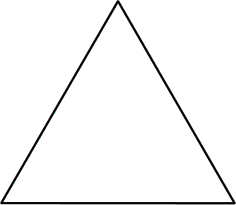01 DEC 2024 by ideonexus
 Stone Tools in Europe Were Misinterpreted
Stone Tools in Europe Were Misinterpreted
For hundreds of years Europeans appear to have been oblivious to the existence of stone tools. Presumably many people saw them. At least it is hard for me to believe that no stone axes, spear points, or arrowheads turned up in plowed fields, dried streambeds, or eroded hillsides. But, as William Stiebing observes, there is no mention of them prior to the 16th century. People apparently “did not notice them. To them such things were just so many more rocks.”3 Writings from the 16th century...24 JUN 2022 by ideonexus
 The Car Example for OOP
The Car Example for OOP
The `Car extends Vehicle` or `Duck extends Bird` type of tutorial
obscures more than it illuminates. In good OO programming, we don’t
make class hierarchies in order to satisfy our inner Linnaeus. We make
class hierarchies in order to simplify the code by allowing different
parts of it to be changed independently of each other, and to
eliminate duplication (which comes to the same thing). Without any
context as to what the code needs to accomplish, you can’t make a
judgment about whether...Folksonomies: education computer science
Folksonomies: education computer science
02 JUN 2015 by ideonexus
 Metaphor in Science
Metaphor in Science
Metaphor in science, Boyd suggests, is a version of the everyday process in which a metaphor is pressed into service to fill gaps in a language’s vocabulary, like rabbit ears to refer to the antennas that used to sprout from the tops of television sets. Scientists constantly discover new entities that lack an English name, so they often tap a metaphor to supply the needed label: selection in evolution, kettle pond in geology, linkage in genetics, and so on. But they aren’t shackled by the...31 MAY 2015 by ideonexus
 The Universality of Analogy
The Universality of Analogy
This reversibility and this polyvalency endow analogy with a universal field of application. Through it, all the figures in the whole universe can be drawn together. There does exist, however, in this space, furrowed in every direction, one particularly privileged point: it is saturated with analogies (all analogies can find one of their necessary terms there), and as they pass through it, their relations may be inverted without losing any of their force. This point is man: he stands in propo...Folksonomies: analogy similarity
Folksonomies: analogy similarity
19 MAR 2015 by ideonexus
 Defining "Posthuman"
Defining "Posthuman"
I shall define a posthuman as a being that has at least one posthuman capacity. By a posthuman capacity, I mean a general central capacity greatly exceeding the maximum attainable by any current human being without recourse to new technological means. I will use general central capacity to refer to the following:
healthspan – the capacity to remain fully healthy, active, and productive, both mentally and physically
cognition – general intellectual capacities, such as memory, deductive an...Folksonomies: transhumanism
Folksonomies: transhumanism
From Nick Bostrom's "Why I Want to be a Posthuman When I Grow Up"
28 JUN 2014 by ideonexus
 The Similies
The Similies
OF COURSE we were hardly all the similes the Ariekei spoke. Some were animal or inanimate: there was a house in Embassytown out of which, many years before, the Hosts had taken all the furniture, then put it back, to allow some figure of speech. The split stone, made so they could speak the thought, it’s like the stone that was split and put together again. Most, though, were Terre men and women: there was something in us that facilitated.
Many similes, of course, were uninterested in thei...The Ariekei can only speak in analogy, not lie, and not speculate. Because of this, they need people to serve as similies, references for their language.




